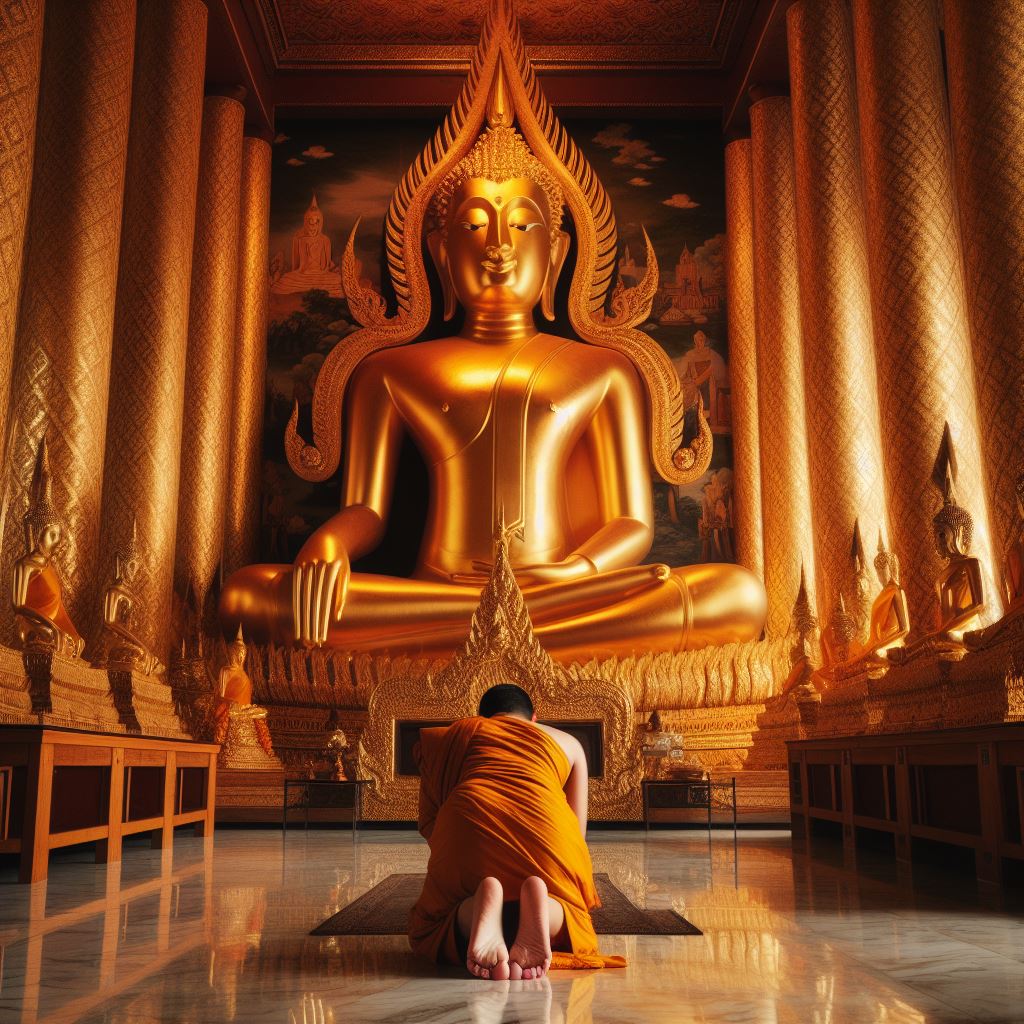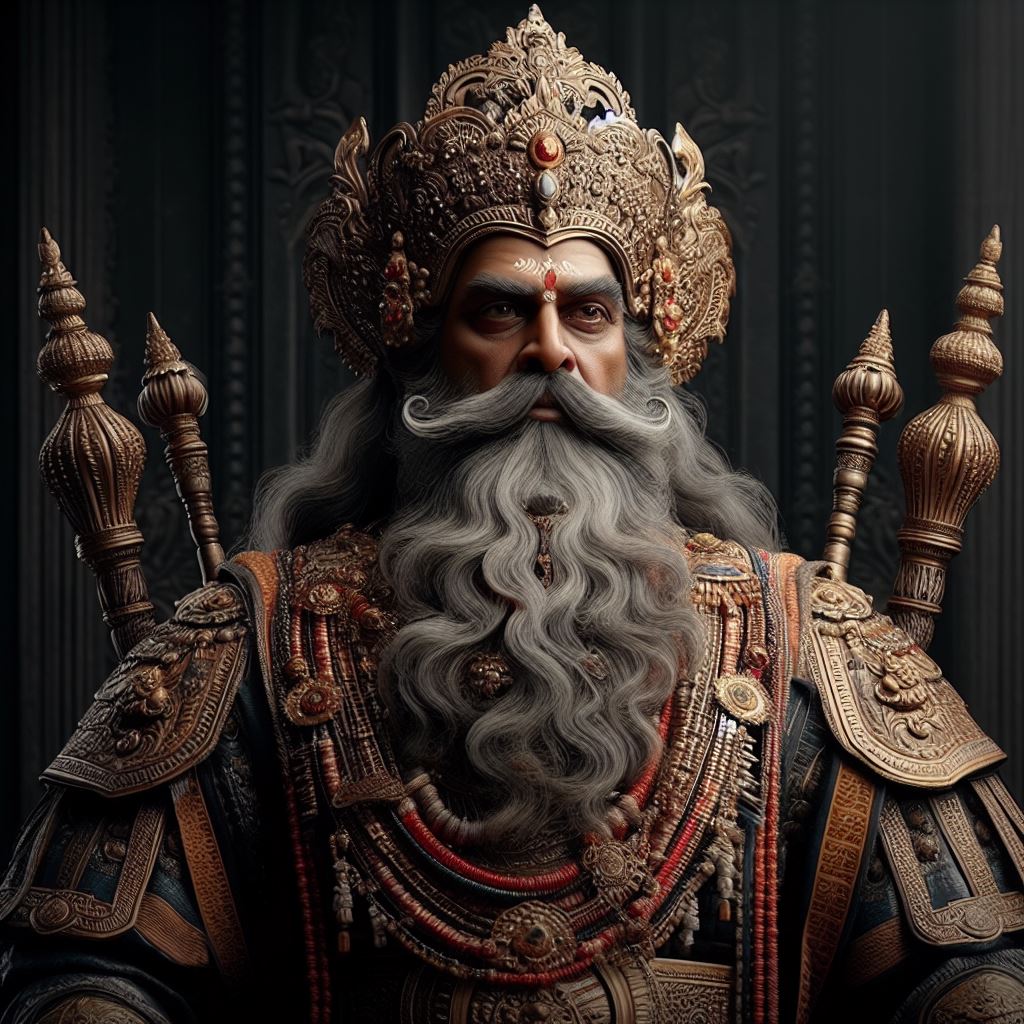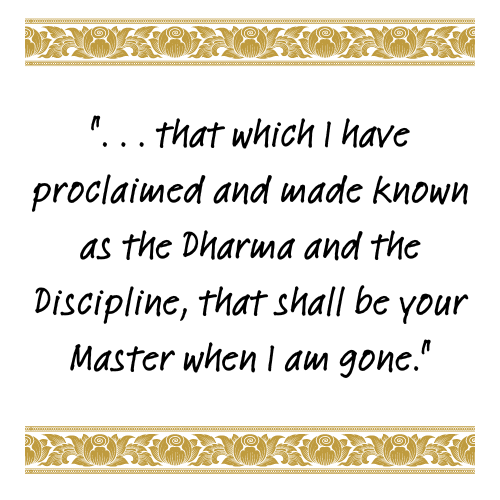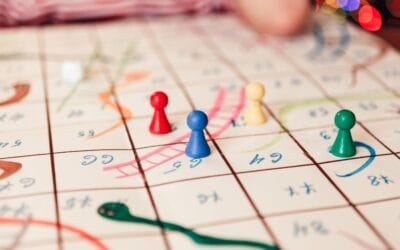The Buddha.
I think you’d struggle to find an adult who had not heard of him. . .
After all, bits and pieces of his teaching have filtered into our everyday language and culture in the West (I mean, who hasn’t ever heard the idea of ‘bad karma’?).
You can also find Buddha-inspired trinkets, clothes and house decorations flooding the international market.
But if you asked one hundred people whether the Buddha was A REAL PERSON, you’ll get a variety of opinions.
(Even one of my Thai students at school told me the other day that the Buddha was ‘the first human on earth’.)
So, the question we’re asking today is:
Who was the Buddha, really?
Was he just a mythical figure?
Or was he an actual historical person who lived and walked the earth two and a half thousand years ago?

The Beginning: The Life of the Buddha
The chances are you’ll know the basics, but just in case, here’s a whistle stop tour:
There’s no complete agreement about precisely when the Buddha was born, but most scholars agree on the date 563 BCE.
However, they do all seem to agree that he was born in a place called Lumbini (in modern day Nepal).
He was known in his early life as Siddhartha Gautama.
As the son of the ruling monarch, Siddhartha was born a prince and was raised in the luxuries and comforts of the royal palace.
(His father, Suddhodana, was the king of the Shakya clan, a small kingdom located in the Himalayan foothills.)
Later in his life, a series of chance encounters with human suffering (in the forms of sickness, old age, and death) eventually led Siddhartha to question the nature of existence and seek a deeper understanding of the human experience.
After renouncing his privileged upbringing, Siddhartha embarked on a spiritual quest.
He tried various ascetic practices and philosophies in his search for enlightenment.
This journey culminated in his famous meditation under the Bodhi tree, where he is said to have achieved nirvana and become the Buddha — the “awakened” or “enlightened one.
From that time on he was known as Gautama Buddha, Shakyamuni Buddha, or simply the Buddha.
The Dharma
Once he had attained enlightenment, the Buddha spent the remainder of his life sharing his profound insights and teachings with devoted followers.
He taught for approximately 45 years.
The Four Noble Truths & The Eightfold Path
His teachings are what we call the Buddhist ‘Dharma’.
At the heart of the Dharma are the Four Noble Truths and the Eightfold Path, which are still the fundamental principles that form the foundation of Buddhist philosophy and practice.

Types of Buddhism
After the Buddha’s death, different schools of Buddhism began to emerge.
Of these, Theravada Buddhism, is considered the oldest.
Theravada Buddhism is practiced primarily in Thailand, Laos, Cambodia, Myanmar and Sri Lanka, and can trace its roots directly back to the time of the historical Buddha.
Alongside Theravada another branch developed: Mahayana.
The Mahayana branch of Buddhism embraced a broader philosophy focused on universal compassion and enlightenment for all beings.
Tibetan Buddhism (sometimes called Vajrayana) is also also part of the Mahayana tradition.
However, it’s evolved unique practices and beliefs influenced by Tibetan culture and spirituality.
A Real Person
Okay, so that’s the life story in an extremely small nutshell.
But what about the PROOF?
How do we know the Buddha actually existed?
Much of what we know about the Buddha’s life comes from ancient Buddhist scriptures and texts, as well as archaeological findings.
Yes, there’s still a lot of debate among scholars (as you’d expect; after all that’s what they’re paid to do!).
That said, we’ve actually got a pretty solid body of evidence to work with.
There’s a huge mix of archaeological finds, ancient texts, and inscriptions that help confirm the Buddha was a real person.
The Evidence
Researchers have dug up all kinds of amazing stuff from the 3rd century BCE onward.
For example, they discovered inscriptions that directly name-drop “the Buddha,” as well as the remains of Buddhist monasteries, monuments, and artifacts.
One of the biggest finds was the identification of Lumbini in Nepal as the Buddha’s actual birthplace, complete with inscriptions verifying it.
Which was pretty cool. . .
The Archaeology

There are myriad inscriptions carved into stone pillars, rock edicts, and various other ancient artifacts that directly mention the Buddha and the early spread of Buddhism.
The most famous is the set of inscriptions commissioned by the Buddhist patron Emperor Ashoka in the 3rd Century BCE.
(Ashoka is an interesting guy, as before becoming a devout Buddhist and spreading Buddha’s teachings of peace throughout his his lands, he was a tyrannical mass-murdering dictator!)
Discovered by British archaeologist James Prinsep in the 19th Century, these “Pillars of Ashoka” contained detailed accounts of the Buddha’s life.
The Pillar in Lumbini contains inscriptions that confirm that this was the birth place of the Buddha himself.
The Texts
As well as the archaeology, there are the ancient Buddhist texts.
The Vinaya and the Suttas, which contain detailed biographies of the Buddha’s life and teachings, are good examples.
As I said earlier, scholars may debate the exact dates of when these were written down.
However, they clearly document the core stories and traditions about the Buddha.
But it’s not just the Buddhist texts that give us huge amounts of information.
Other ancient Indian epics, like the Mahabharata and Ramayana, also make references to the Buddha, further confirming his historical presence as a real person.
A Recommended Watch
A PBS documentary called “Secrets of the Dead: Bones of the Buddha” provides more history and insights into the Buddha’s life.
I’d seriously recommend watching it — it’s pretty fascinating. . .
Given all the evidence we now have, it’s logical to conclude that the Buddha WAS a real historical figure who lived and died in India two and a half thousand years ago,
However, the truth is that Buddhists should not be too invested in the question of the whether the Buddha really existed or not, as it’s a distraction from what’s important:
The Dharma.
During his very last days, the Buddha is reported to have said the very same thing.
According to the Buddhist scriptures (Mahaparinibbana Sutta; DN 16 ), the Buddha knew that some of the monks would wonder who would teach them now that their master was gone.
He told Ananda (his closest disciple, personal attendant and companion for the last 25 years of his life) the following:

By saying this, the Buddha reinforced a core teaching:







0 Comments